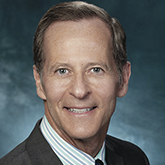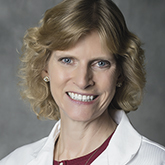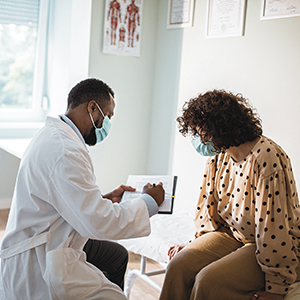The significance of SDOH & what needs to change
The importance of social determinants of health (SDOH)—the nonclinical factors and systematic social and economic conditions that affect a person’s health—have grabbed heightened attention over the last year due to the pandemic’s impact on the U.S. health system.

“We’ve known for decades that poverty is the principal driver of poor health, but the pandemic has brought to glaring light the power and influence of social determinants on health outcomes,” says David Nash, M.D., MBA, Founding Dean Emeritus of the Jefferson College of Population Health in Philadelphia.
The significance of SDOH
According to an independent research report from the Commonwealth Fund, the U.S. spends significantly more per capita and as a percentage of GDP on healthcare than other high-income countries, yet it has poorer health outcomes. This is largely attributed to the influence of social determinants on people’s health and well-being and their contribution to health inequities. Examples of SDOH include the following:
- access to healthy food and opportunities for physical activity
- level and quality of education
- income level and job opportunities
- safe and secure housing and neighborhood

Harris-Hollingsworth, EdD, MCHES
“The social determinants are all of the things in your environment, in your history, in your experience. And those social determinants lead to particular types of health outcomes,” says Nicole Harris-Hollingsworth, EdD, MCHES, Vice President of Social Determinants of Health at Hackensack Meridian Health in New Jersey. “If someone is homeless, it doesn’t matter if they’re a marathon runner; their health is going to suffer.”
Every day, physicians and health professionals experience the challenges of caring for patients with underlying social determinants. The good news is physicians and hospitals play a critical role in improving their patients’ SDOH and, by extension, improving health outcomes and reducing the costs of care.
Identifying the determinants
Understanding which social determinants impact which health outcomes is key, says Harris-Hollingsworth. “If it’s a determinant that’s easy to fix, or if it can be changed through a direct intervention [such as a ride to an appointment], we would rather solve for that than have a person with a poor health outcome,” she says.
Hackensack Meridian Health prioritizes the social determinant areas of food security, housing stability, transportation issues, caregiver support and mental health/behavioral health/substance use disorder as initial areas of focus. These SDOH were chosen using predictive analytics and surveys to see which areas made the most sense to prioritize, with further social determinants to be added in the future.
“We have a lot of data to support that if we work on these five key areas, we’re going to get it right 95% of the time,” says Harris-Hollingsworth. “The objective data says it, and this is the behavior we see in our patients and team members.”

By using various screening processes, physicians can identify possible areas patients may need help with or ways they may be at risk. SDOH play a big role in the emergency departments that often act as a safety net in our society, says HealthTrust Physician Advisor Valerie Norton, M.D., FACEP, Physician Operations Executive at Scripps Mercy Hospital in San Diego. In the emergency department at Scripps Mercy Hospital, every patient goes through screening processes, such as a social history, a suicidal ideation screening and a domestic violence screening. “Any one of those could impact their health in various ways,” says Dr. Norton. “Once we have a conversation with the patient, we can better understand if there’s any way we can help them with those issues.”
Knowing the specific SDOH impacting a patient can also help physicians anticipate and address future concerns. “In one study, we found we were able to predict the likelihood of a no-show based on the type of social determinant. For example, if someone shared that they had difficulties with paying utilities, that person was more likely to miss an appointment than other types of social determinants,” says Harris-Hollingsworth.
A collaborative approach
Once a need is identified, help and support can be offered in several ways. Harris-Hollingsworth stresses the importance of the doctor-patient relationship with improving social determinants. “Physicians are our greatest advocates. What we find, especially as it relates to the social determinants of health, is people will do what their doctors tell them to do.
If their physician says they need to eat more vegetables, that carries more weight than what anyone else says,” she explains.
At Hackensack Meridian Health, community health workers act as a bridge between clinical and social needs. A physician might give a patient information about their closest food pantries and connect them with a community health worker who will follow up with the patient.
“The patient might say, ‘I need food, but I also have a problem with getting to food because I use a walker.’ Our community health worker can connect them to a medically tailored food delivery program,” says Harris-Hollingsworth. “They can help the patient work with their local municipality on having a ramp built to their house, if a ramp is needed.”
In the emergency department at Scripps Mercy Hospital, case managers step up to assist. “Our case managers can do all kinds of magical things like figure out how to deliver an antibiotic to a patient’s home the next day if they can’t get to the pharmacy,” explains Dr. Norton. “I think that’s where it helps to have service-oriented staff who can address some of these special needs.”
Another key strategy in improving SDOH is to foster diversity in hiring, says Dr. Norton. “You want your staff to reflect the community you’re in as much as you possibly can. It matters to them to see people in healthcare who look like them, talk like them, can understand their issues and where they come from,” she adds.
Often, further help is delivered as a referral to a community partner. “The key is to understand you can’t do it all. You need to know when to build something that doesn’t exist, but most importantly, if it exists, you need to refer to it and support it as a resource in your community,” Harris-Hollingsworth says.
Community partners include nonprofit organizations such as Meals on Wheels and municipal programs such as the Supplemental Nutrition Assistance Program (SNAP) and the Special Supplemental Nutrition Program for Women, Infants and Children (WIC). They also include community health clinics, detox and drug rehab treatment centers, and psychiatric clinics.
“I can’t emphasize enough the importance of having good community clinic partners, especially if you have a large percentage of Medicaid patients who may not be eligible for HMO-type clinics. It’s crucial to have community, federally funded clinic partners because that’s how those patients get their follow-up,” Dr. Norton explains.

A new conversation
Once you start looking at healthcare through the lens of SDOH, it’s hard to stop. The social determinants play into all aspects of healthcare and life: how buildings are designed, where vaccination centers are located or even what lunch is served in elementary school. “The social determinants are inextricably interwoven in all healthcare decisions. It’s not a separate conversation. It is the conversation,” Dr. Nash says.
He suggests the pandemic may be the impetus to the investment, policy changes and commitment needed to tackle SDOH. “The good news is maybe the pandemic will provide us with a platform that’s on fire, and the social determinants many of us have long sought to bring to the forefront will now become a top priority,” Dr. Nash adds. “I’m hoping this will be a silver lining to what we’ve been through.”
Since the start of the pandemic, social determinants have worsened the impact of COVID-19. “Los Angeles County is ground zero for deaths from COVID-19. Why is that?” Dr. Nash asks. “Poverty, intergenerational living, poor education, inability to work from home because hourly workers have to show up to make a living—it’s a recipe for disaster.”
“We’re concerned about patients from underserved areas bearing the biggest brunt of COVID, getting the highest number of cases and having worse outcomes because they have higher rates of chronic disease. We’re also concerned about these same issues with patients getting access to the vaccine,” says Dr. Norton, who noted that Scripps is using a variety of tactics to help foster equitable access, including traditional and digital marketing and communications strategies, along with community outreach.
Some of the biggest challenges in distributing the COVID-19 vaccine, explains Dr. Nash, are access and logistics. “How do we actually deploy the vaccine in communities of color that are typically less affluent? The local clinics are resource-constrained and may not have refrigerators to store the vaccines or nurses available to administer them.”
Covering an eight-county region that’s a combination of urban, rural and suburban geography, Hackensack Meridian Health also recognizes logistics as a challenge, specifically when it comes to transportation. With that in mind, one of its strategies is to set up vaccine centers in alignment with support services and close to places people often visit, like supermarkets and food pantries.
Housing and food insecurities and language barriers are other obstacles affecting the Hackensack Meridian Health patient population. “A person with housing distress could miss every healthcare-related appointment they have,” Harris-Hollingsworth says. The system launched a vaccine education webinar series for residents with Korean, Hindi, Latino and African American ancestry to provide information in a culturally responsive manner and is partnering with food banks to help feed people in need due to COVID-19. “To the extent we can coordinate vaccine distribution with these support services, we will,” she adds.






